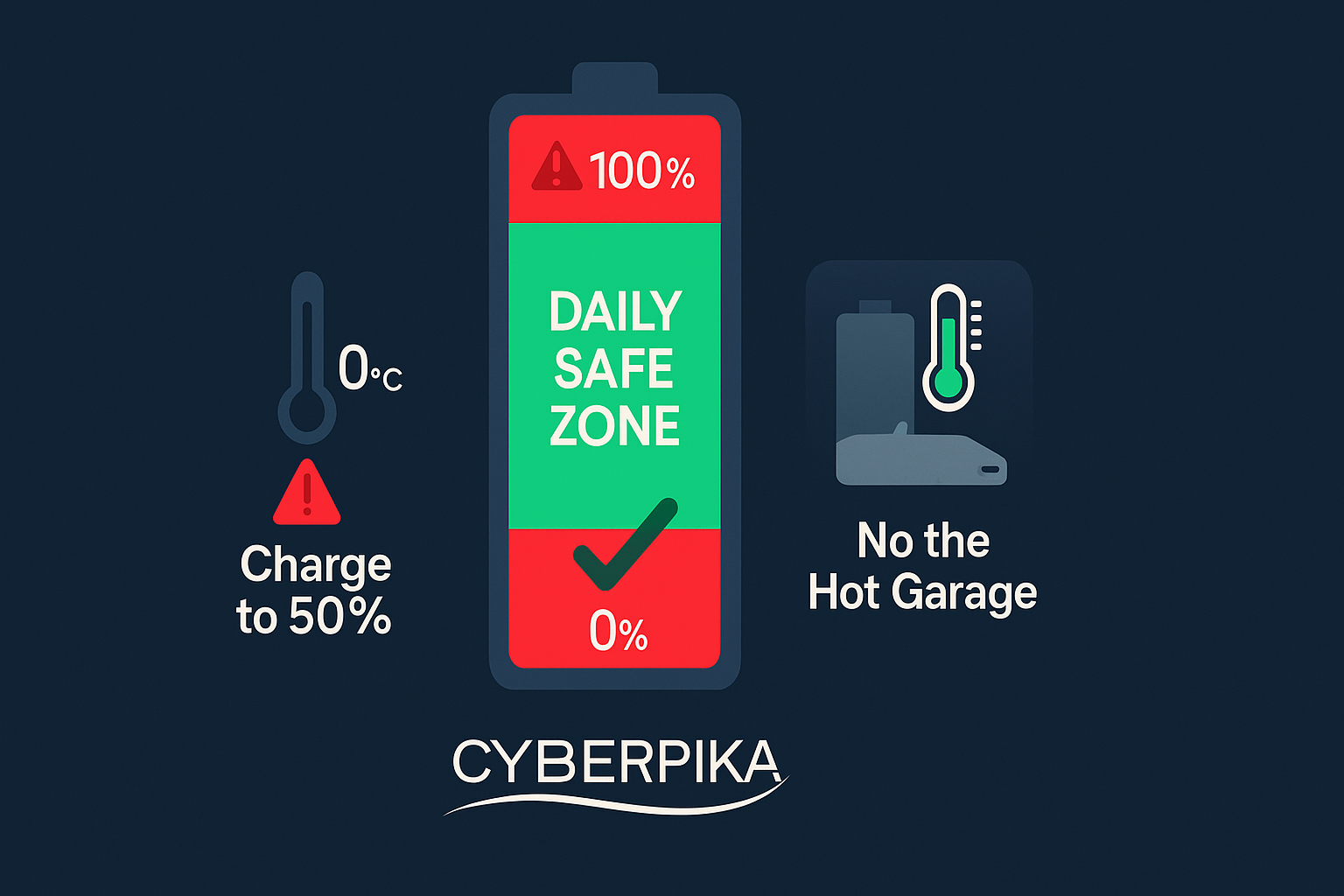This is an excellent topic. Many people bring outdated information from older battery types (like Nickel-Cadmium) into the modern world of e-bike batteries, which are almost universally Lithium-Ion (Li-ion) or Lithium-Polymer (Li-Po).
Here are the biggest myths about 'calibrating' e-bike batteries and the truth behind them.
🛑 Myth 1: "You Must Completely Drain the Battery to 0% to Recalibrate It."
This is the most dangerous myth stemming directly from the old Nickel-Cadmium (NiCd) battery "memory effect."
The Reality (The Deep Discharge Danger)
-
No Memory Effect: Lithium-ion batteries do not suffer from the memory effect in the same way NiCd batteries did. You do not need to fully discharge them before recharging.
-
The Stress of Zero: The lowest stress state for a Li-ion cell is around 40% to 60% charge. The two most damaging states for a Li-ion battery are 100% charge and near 0% charge.
-
BMS Protection: When your e-bike display reads 0% charge and shuts down, the battery's built-in Battery Management System (BMS) is programmed to cut power while the cells still have a vital reserve charge remaining (typically 5% to 10%). If you bypass this and force a deep discharge, you can cause irreversible damage to the cells, leading to a permanent loss of capacity and potentially rendering the battery unsafe or unable to charge again.
The Bottom Line: Never intentionally try to drain your Li-ion e-bike battery to an absolute 0% voltage. Recharge when you are in the 20% to 30% range.
🛑 Myth 2: "Calibration Requires Fully Charging to 100% and Discharging to 0%."
This idea is part-myth, part-misunderstanding of what "calibration" actually means for a smart battery.
The Reality (Balancing, Not Recalibration)
-
The Fuel Gauge: "Calibration" doesn't fix the battery's capacity; it fixes the BMS's State-of-Charge (SoC) estimation (the "fuel gauge" percentage or bar display). Over many partial charge cycles (e.g., 40% to 80%), the BMS can lose track of the cell voltages, leading to an inaccurate reading.
-
The Full Charge Need (Balancing): Modern Li-ion batteries require reaching a 100% charge periodically so the BMS can perform a crucial function called Cell Balancing.
-
The BMS holds the battery at full charge for a period of time to allow all the individual cell groups within the pack to equalize their voltage. This ensures the entire pack uses its full available capacity and prevents one low-voltage cell from prematurely shutting down the entire system.
-
-
The Best Practice:
-
Charge to 100%.
-
Leave it plugged in for an extra 1 to 3 hours after the light turns green to allow the BMS time to balance the cells.
-
You do not need to discharge it to 0% afterward. Just use it normally. A simple full charge once every 20 to 30 rides, or once a month, is typically sufficient to keep the SoC gauge accurate.
-
🛑 Myth 3: "You Should Charge for 12 Hours for the First Charge."
This is an instruction from the very early days of consumer electronics that does not apply to modern Li-ion.
The Reality (The Built-In Safety)
-
Smart Chargers: Modern e-bike chargers and batteries are equipped with sophisticated electronics. The BMS communicates with the charger to precisely manage the process.
-
Auto Shut-Off: When a Li-ion battery hits its full voltage, the BMS tells the charger to stop sending current.11 Leaving it plugged in for an extended period beyond a few hours for balancing is pointless and can actually generate a small, unnecessary amount of heat, which is always bad for the battery.
The Bottom Line: Charge the battery until the charger light turns green/solid (usually 4 to 8 hours, depending on the battery size), then leave it for a couple of extra hours for balancing, and then unplug it.
✅ The True Best Practices for Li-ion Battery Longevity
Focus on these three rules instead of attempting myth-based calibration:
| Rule | Description | Why It Works |
| The 20% to 80% Rule | For everyday riding, try to keep the charge level between these two percentages. | This minimizes the voltage stress on the cells, drastically increasing the number of charge cycles the battery can handle. |
| Avoid the Extremes | NEVER let the battery drop below 20% for long. NEVER store it at 100% or near 0% for an extended period. | The high and low voltage points are the most stressful and lead to the fastest permanent capacity loss (degradation). |
| Periodic 100% Charge | Charge to 100% once per month (or every 20 to 30 cycles) and let it balance for a couple of hours. | This ensures the BMS's "fuel gauge" remains accurate and keeps the cells balanced, allowing you to use the full available capacity. |


Share:
Storage Guide: 50% State-of-Charge & Cool, Dry Places
The 5-Minute E-Bike Battery Checklist: Your Weekly Plan for Maximum Lifespan